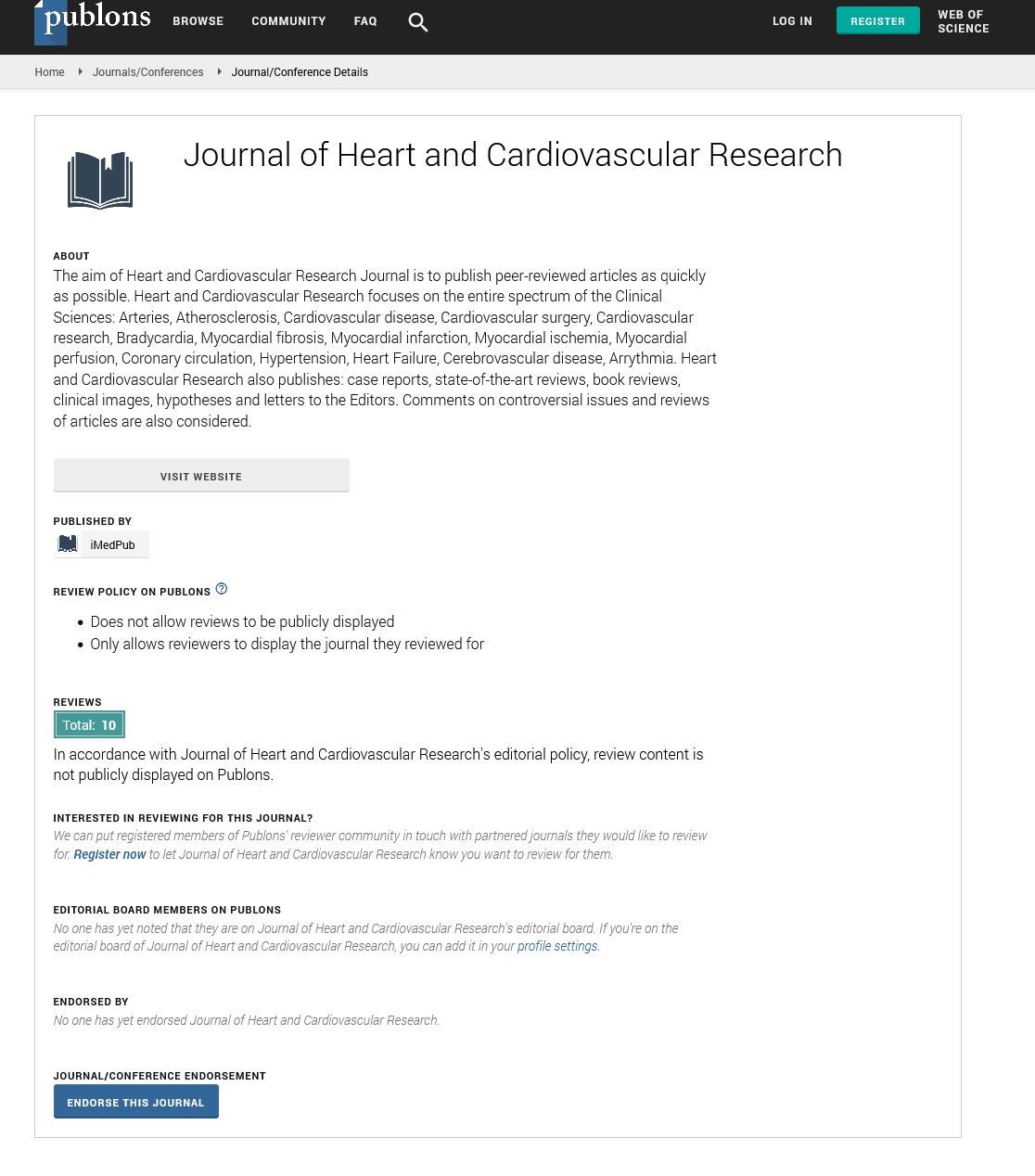ISSN : ISSN: 2576-1455
Journal of Heart and Cardiovascular Research
Abstract
Adenosine Attenuates cAMP-Dependent Chloride Current In Isolated Guinea-Pig Ventricular Mycocytes
The hypothesis that adenosine can attenuate cAMP-dependent chloride current (ICl) was tested in isolated single guinea-pig ventricular myocytes. Using the patch clamp technique, whole cell ICl was quantified during 220 msec voltage steps in the range of -100 mV to +50 mV from a holding potential of -30 mV under conditions of equal intra- and extra-cellular chloride concentrations and minimized Na+, Ca2+ and K+ currents. The addition of either isoproterenol (ISO) or forskolin (both 1 μM) enhanced transmembrane current from 120 ± 15 pA to 353 ± 50 pA, and from 110 ± 15 pA to 606 ± 133 pA, respectively (each, p<0.05). The reversal potential of this current shifted to ~ + 30 mV upon substitution of NaCl with Na-glutamate indicating that the current was ICl. Adenosine (Ado, 100μM) attenuated the ISOand forskolin-enhanced currents to 198 ± 55pA and 377 ± 74 pA, respectively (each, p<0.05). The A1AdoR agonist N6-cyclopentyladenosine (CPA, 5 μM) exerted similar action, and the A1AdoR antagonist 8-cyclopentyltheophylline (CPT, 5 μM) partially reversed it. Pre-treatment with pertussis toxin (PTX; 1 μg/ml for 3 hrs.) also abolished the effect of Ado. It was concluded that (i) A1AdoR and PTX-sensitive G protein(s) mediated the effect of Ado on cAMP-dependent ICl, (ii) the activation of adenylyl cyclase with forskolin modulates the action of CPT on A1AdoR-mediated agonists actions, and (iii) This additional manifestation of the anti-adrenergic action of Ado in the mammalian ventricular myocardium, could play a role in its cardio-protective effect under pathophysiologic conditions.
Author(s): Jiang Xu, Qi-Hua Gong, Steven J. Wieland and Amir Pelleg
Abstract | Full-Text | PDF
Share This Article
Google Scholar citation report
Citations : 34
Journal of Heart and Cardiovascular Research received 34 citations as per Google Scholar report
Journal of Heart and Cardiovascular Research peer review process verified at publons
Abstracted/Indexed in
- Google Scholar
- Sherpa Romeo
- China National Knowledge Infrastructure (CNKI)
- Publons
Open Access Journals
- Aquaculture & Veterinary Science
- Chemistry & Chemical Sciences
- Clinical Sciences
- Engineering
- General Science
- Genetics & Molecular Biology
- Health Care & Nursing
- Immunology & Microbiology
- Materials Science
- Mathematics & Physics
- Medical Sciences
- Neurology & Psychiatry
- Oncology & Cancer Science
- Pharmaceutical Sciences
